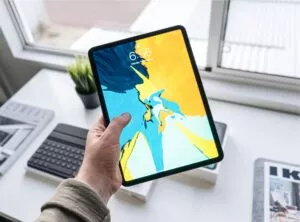
The Best Tablets in Canada
Here are the best tablets in Canada:
- Our favourite tablet: iPad Pro (2020)
- Best budget tablet: Amazon Fire HD 8
- Best tablet for students: iPad Air (4th generation)
- Best Android tablet: Galaxy Tab S7+
- Best tablet for kids: Fire HD 8 Kids tablet
With so many iPad generations and Android tablets out there, I get why you’re looking for a tablet comparison guide.
Tablets have come a long way since they became super popular in the early 2010s. From fancy cameras to powerful processors, the specs that make a good tablet change all the time.
That’s why we’re here to help you understand what to look for in your next tablet, as well as share with you what we think are the best tablets in Canada this year for a range of needs. There are options for creatives, students, business people, and anyone looking for the best tablet for the money.
We’ve gone through dozens of top-rated tablets available in Canada and carefully selected the ones we think would be the best fit in different situations.
Our top picks
How to choose a tablet
- Operating system: The Android vs iOS fight is not only about smartphones. It can actually be even more complex when it comes to tablets, since there are also Windows tablets under the Microsoft Surface line. All three operating systems have their pros and cons. Your decision should be based on how used you are to each OS, the apps you will need (it’s worth checking if there’s anything essential for you e.g. Garageband is available for Apple devices only), and the compatibility with the devices you already have, such as phones, laptops and smart home gadgets.
- Screen size: If you’re looking to buy a tablet, chances are high you don’t want something as large as a laptop nor as small as a smartphone. Most tablets have screens around 10 inches. But if you’re going to use your tablet for work or need top performance, the tablets on the Pro side usually have larger screens (12 inches+), whereas the devices on the smaller side usually have 7-8-inch screens. Smaller screens can be useful for reading and using apps you already use on your phone but may not be ideal for work projects, for example.
- Performance and storage: For tablet performance, the most important factors are processor, RAM memory, and storage. This also depends on how you plan to use your tablet. Most Pro tablets have at least 8GB RAM, 256 GB storage, and an octa-core processor. For simple tasks, such as social media and editing docs, however, you may not need such a powerful device. Different brands have different performance standards. Apple, for example, doesn’t call its unified memory a RAM and its latest processor, M1, is used only by the company, but the iPad is still considered one of the best tablets on the market.
- Battery: Manufacturers may advertise battery power in two ways: via milliampere-hour (mAh) units or hours of battery life. On the mAh side, a good tablet battery in 2022 needs at least 5,000 mAh. This unit measures the energy capacity of a battery. The higher the mAh, the longer the battery life. When it comes to duration, most high-end tablets, such as the iPad Pro or the Samsung Galaxy S7, have battery lives around 10 hours for regular use. Some tasks are more energy-consuming than others. If a brand says their tablet runs for 7 hours of video streaming, this means it will probably last longer doing other things such as messaging apps. On the other hand, if they advertise the battery lasts 10 hours without mentioning anything else, chances are high that it may have a shorter duration for heavy use, such as gaming, streaming, and video editing.
- Camera: After years of webcam-like resolutions, people stopped expecting much from tablet cameras. However, this new wave of tablets has done its homework, and you can find tablets with high-end cameras… for a tablet. Devices on the higher-end may allow you to shoot Full HD or 4K videos and usually have around 10-12 megapixels (MP) for photos. Whereas some tablets don’t even have cameras, so it really depends on what you plan to do with it. In general, the “Pro” tablets are the ones with the best cameras, such as the Microsoft Surface Pro X, the iPad Pro, and the Lenovo P11 Tab Pro.
- Accessories and versatility: People looking for a tablet are often looking for versatility as well. You may want to turn it into a laptop at times, or use it as a cellphone replacement. There’s a sea of tablet accessories, including trackpads, cases, keyboards, camera lenses, pens, stands, mounts, HDMI adapters, and more. What will make a tablet more versatile than its peers is the compatibility with this variety of gadgets. Brands like Samsung, Microsoft, Lenovo, and Apple have many official accessories that add more features to their devices, and allow you to do more than you normally would.
- Display resolution: The pixel density of a display is the most important factor when it comes to image quality. Measured in PPIs (pixels per inch), the higher this unit for a tablet display, the better the image tends to be. Many brands will advertise their tablets as having HD, Full HD or even 4K screens, however, this doesn’t mean much separately; devices with the same resolution (for example, 1920 x 1080 pixels) can have different PPIs depending on the screen size. If you care about image quality, getting a tablet with at least a 110 PPI screen would be the minimum spec. Now, if you really care about crystal clear videos and photos (especially if you work editing these), any display with more than 200 PPI should be able to provide exceptionally looking images.
Best budget tablet
Amazon Fire HD 8 tablet (2020 release)
This Amazon Fire tablet is a good pick for a first tablet, especially if you’re still figuring out if you really need one. It’s easy to carry, comes with built-in Alexa, Amazon’s voice assistant, and it’s a budget option (you can buy it for around $100 in Canada.)
With a quad-core 2.0 GHz processor and 2 GB of RAM, you have enough performance power for checking emails, listening to songs on Spotify, scrolling your social media feeds, and browsing the web, but don’t expect much more than that.
We wouldn’t suggest this tablet for heavy or professional use.
The Fire HD 8 is portable, lightweight (355 g) and could be a good companion during a trip for watching movies and reading. After all, this is an Amazon device and comes with native Kindle apps.
Its 8″ display is not great (189 PPI), but it isn’t awful either. This means it’s not ideal for anyone working on visual or meticulous projects that require crisp resolution, but it will do the work for some Netflix or Prime Video on the go.
Specifications:
- Operating system: Modified Android
- Screen size: 8″
- Display resolution: 1280 X 800 pixels
- CPU: Quad-Core 2.0 GHz
- RAM: 2 GB
- Storage: 32 or 64 GB (expandable to 1 TB)
- Battery: 12 hours
- Camera: 2 MP; 720p HD video recording
Pros
- Affordable.
- Portable size (20.2 x 13.7 x 0.97 cm)
- Expandable storage (up to 1 TB).
Cons
- Limited to the Amazon app store.
- Not a great screen resolution.
Best iPad
iPad Pro (2020)
The iPad Pro (2020) comes in two sizes: the 11-inch version and the 12.9-inch one. These two are quite similar for most of their features, including RAM memory and storage options, except for obviously weight, screen size and overall size. The 11″ iPad Pro is lighter and smaller.
But yes, in this iPad comparison, the 12.9″ iPad Pro has more complete specs, especially when it comes to screen quality, such as a Liquid Retina XDR display and more brightness levels. This can be a deal-breaker for professionals such as designers and videomakers, but not for most users.
With Apple’s acclaimed M1 chip and 8GB or 16 GB RAM options (the latter on models with 1 or 2 TB storage only), the iPad Pro can do almost anything a computer would. Of course, it still has some of the limitations any other tablet has, but it’s really impressive to listen to what people have to say about it, especially regarding tough jobs such as video editing.
Video editing usually requires a lot from any machine and there are numerous reviewers shocked by how well the iPad Pro handles this task. According to this 4K Shooters review, the iPad Pro still can’t replace your regular video editing computer but it can get the work done when your laptop is not around.
For the 12.9″ version, the iPad Pro not only displays crisp images (2732 x 2048 pixels at 264 pixels per inch) but also feels comfortable to look at for hours, thanks to its 2D backlighting system with 2596 full‑array local dimming zones. We’d still recommend you an e-reader if you read a lot of e-books, but as long as tablets can go for reading, it doesn’t get much better than this.
As we mentioned before, cameras are not a tablet’s forte, but nobody does it like the iPad Pro. With 12MP and Wide and Ultra Wide cameras, you will be able to take nice pictures and record 4K videos using this iPad. These iPad Pros have five-element camera lenses and a good combination between hardware and camera software, which has been Apple’s differential since the first iPhone.
For an example of how the photos and videos taken with the iPad Pro camera may look like, here’s an in-depth article by Lux Camera with many sample images.
Specifications:
- Operating system: iOS
- Screen size: 12.9″
- Display resolution: 2732 x 2048 pixels
- CPU: Apple M1
- RAM: 8 or 16 GB
- Storage: 128, 256 or 512 GB; 1 or 2 TB
- Battery: 10 hours
- Camera: 12 MP; 4k video recording
Pros
- Many storage options.
- Gorgeous display resolution.
- Great speakers (for a tablet.)
- Apple M1 chip.
- 4K video recording.
Cons
- The larger storage options are really expensive.
- Not super portable (684g and 11.04 x 8.46 x 0.25 inches.)
Best tablet for students
iPad Air (4th generation)
This is also our pick for the best tablet for reading (although we’d still recommend an e-reader for reading books.)
The iPad Air (4th gen) is ideal if you’re not looking to spend too much on an iPad Pro but still want a little more power than the regular iPad (9th gen.)
This iPad comes with A14 Bionic chip with 64-bit desktop-class architecture, and both 64 GB and 256 GB storage options. This means more power than most tablets on the market, but limited storage options.
For students, this can be a hard balance. 64 GB may not be enough for your apps and files, but you probably don’t want to pay almost $200 more for the model with larger storage either.
Aside from that, the iPad Air is one of the best-reviewed tablets Canadians can find today.
With up to 10 hours of battery life on Wi-Fi and a 10.9-inch 264 PPI screen, this Apple tablet could make most users happy, not only students. It allows you to stream videos, listen to music, use multiple apps and even play some games without performance issues.
Specifications:
- Operating system: iOS
- Screen size: 10.9″
- CPU: Apple A14
- Storage: 64 or 256 GB
- Battery: 10 hours
- Camera: 12 MP; 4k video recording
Pros
- Works with Apple’s Magic Keyboard and Pencil.
- Great for students in the creative industry.
- Five colour options (green, silver, space grey, rose gold, and blue.)
Cons
- Limited ports.
- Up to 256 GB only.
- No support for Thunderbolt.
Best tablet with keyboard
Microsoft Surface Pro 7
Most reasonably priced tablets don’t come with a keyboard included. For our “tablet with keyboard” category, we considered tablets that have native compatibility with keyboards but that don’t necessarily come with one in the same box.
The Surface Pro 7 is an interesting option if you’re looking for a tablet for work or school. This laptop-tablet hybrid is designed for you to write, work and study for long hours, especially if you’re already used to using other Windows devices. It has a battery life of up to 10.5 hours, and users love its case and keyboard integration.
When it comes to performance, this model enables you to choose how powerful you’d like it to be, it has 4, 8 and 16 GB RAM options, as well as 128 GB, 256 GB, or 1 TB storage. You can also choose if you’d like it with an i5 or i7 Intel processor. Of course, all of these possible settings directly affect the Surface Pro 7’s price. Regardless of the configuration you choose, this Windows tablet should be more than enough for you to do regular tasks and school work without choppy scrolling or slowness.
However, its least powerful version (i5 with 4GB RAM and 128 GB storage) is not ideal for hard work such as gaming, video editing and music production.
In addition to the keyboard/cover, you can also use it with the Surface Arc Mouse and the Surface pen.
Specifications:
- Operating system: Windows
- Screen size: 12.3″
- Display resolution: 2736 x 1824 pixels
- CPU: Intel i5 or i7
- RAM: 4, 8 or 16 GB
- Storage: 128 GB, 256 GB or 1 TB
- Battery: 10.5 hours
- Camera: 8 MP
Pros
- Laptop-like keyboard.
- Windows features.
- Beautiful design.
- Multiple RAM, storage, and processor options.
Cons
- Limited ports.
- Not an impressive performance.
- Keyboard sold separately.
Best Android tablet
Galaxy Tab S7+
The Samsung Galaxy Tab S7 Plus has been named the best productivity tablet by many authoritative media outlets.
For us, it makes total sense. As of late 2021, no other Android tablet beats this Samsung option.
Although the S7 Plus has a wide range of features that makes us like it, it really stands out when it comes to two core specs: display and performance.
With storage up to 1TB, an octa-core processor, and a memory RAM size of 6 GB, this is a powerful tool that will handle the toughest jobs expected from an Android tablet.
With regards to the display, the 12.4″ Super AMOLED screen has a resolution of 2800 x 1752 pixels and a density of around 266 PPI. This means almost anything you try to watch or read on this tablet’s screen will look amazing.
Just like the iPad Pro and other high-end tablets, we only suggest the Galaxy Tab S7 Plus for users who feel they’re going to get the most out of it, whether working, watching videos, or studying.
If you’re looking for a good Android tablet for when you don’t have your phone or laptop around, we’d recommend its simpler version, the Galaxy Tab S7, which can sometimes be found at half the price of the Plus model.
Specifications:
- Operating system: Android
- Screen size: 12.4″
- Display resolution: 2800 x 1752 pixels
- CPU: 3.09GHz, 2.4GHz, 1.8GHz
- RAM: 6 GB
- Storage: Up to 1 TB
- Battery: 10,090 mAh (up to 15 hours)
- Camera: 13 MP
Pros
- Gorgeous display.
- 5G option.
- Impressive battery capacity (10,090 mAh.)
- Four colour options (black, silver, bronze, navy.)
Cons
- Not very portable (18.5 x 28.5 x 0.57 cm)
- Heavy (590 g)
Best Windows tablet
Lenovo ThinkPad X12 Detachable (12″, Intel)
Who would’ve imagined that the device under this category wasn’t going to be a Microsoft tablet?
Well, pretty much anyone who’s tried the ThinkPad X12 Detachable (12″, Intel) Tablet, probably.
This Lenovo tablet-laptop hybrid is one of the most powerful tablets out there and could be a useful tool for those who already use Windows 10 computers and want to keep everything under the same system.
The ThinkPad series is well known for its superb laptops. And they did it again, now with a tablet.
With an Intel i3, i5 or i7 Core vPRO processor — not a very common feature for a tablet — and 8 or 16 GB RAM options, this tablet is powerful enough to run for hours without performance issues, which could be ideal if you’re looking for something for work or school.
Its integration with the keyboard and the tablet pen makes it even more office-friendly, especially if you have frequent presentations.
As a tablet, the ThinkPad is somewhat lightweight and portable for a 12″ tablet (11.15″ x 8.01″ x 0.34″ and 760g), but it gets bulky with the keyboard attached (11.15″ x 8.01″ x 0.57″ and 1.1kg.).
It’s portable but not that portable.
Specifications:
- Operating system: Windows
- Screen size: 12.3″
- Display resolution: 2800 x 1752 pixels
- CPU: Intel i3, i5 or i7 Core vPRO processor
- RAM: 8 or 16 GB
- Storage: 512 GB
- Battery: Up to 10.36 hours
- Camera: 8 MP
Pros
- Great keyboard integration.
- Intel i7 processor option.
- 8 and 16 GB RAM options.
- Great for presentations.
- Backlit keyboard.
Cons
- Bulky for a tablet (11.15″ x 8.01″ x 0.57″ and 1.1kg with the keyboard.)
- Limited app options (Windows Store.)
Best tablet for gaming
Lenovo Tab P11 Plus
As gaming devices, tablets can be quite annoying. They’re often too large, too slow, or too small.
Still, if you’re looking for a gaming tablet, there are some things you should have in mind: performance, display, battery life, and comfortable tablet use.
For us, the Lenovo Tab P11 Plus is the tablet that best fits these requirements.
With a MediaTek Helio G90T Tab Octa-Core processor with up to 2.05GHz main frequency and 4 or 6 GB of RAM options, this tablet is powerful enough to run most of the games available for Android tablets. This is actually one of the few tablets that mention gaming when talking about performance on its official website.
The Tab P11 comes in multiple versions performance-wise; and the more powerful the specs, the more expensive it gets. However, none of them has storage of more than 128 GB, which can definitely be an issue for some gamers.
With an 11″ 2K display, most movies and games will look good on this tablet — good, no great. After calculating its PPI using CalculatorSoup’s calculator, we noticed that the Tab P11 has around 212 PPI, which is fair but not game-changing (no pun intended!)
With a 7,700 mAh battery, the Tab P11 Plus has a battery life of up to 15 hours, although it probably won’t last that long with games.
With 10.2″ x 6.4″ x 0.295″ dimensions, the Lenovo Tab P11 Plus should be somewhat easy to maneuver for gaming, as far as a tablet can go. Additional tip: if you’re going to use your tablet many hours a day, especially for gaming, many ergonomics experts recommend a comfort grip for long-term tablet use.
We also like that this tablet is not a huge investment like a Samsung or Apple tablet would be. Even its most powerful version is currently under $600 in Canada, and the basic model is a bit above $300. This means that if you’re done with tablet gaming some months from now, you won’t necessarily feel like your money was drained.
Specifications:
- Operating system: Android
- Screen size: 11″
- Display resolution: 2K
- CPU: MediaTek Helio G90T Tab Octa-Core processor
- RAM: 4 or 6 GB
- Storage: Up to 128 GB
- Battery: Up to 15 hours
- Camera: 8 MP
Pros
- Many games via Google Play Store.
- Affordable.
- 2K screen resolution.
- Long battery life (up to 15 hours.)
Cons
- Small storage options for gamers (64 or 128 GB.)
- The budget version may not be ideal for gaming (4 GB RAM and 64 GB storage.)
Best tablet for kids
Fire HD 8 Kids tablet
- The tablet needs to provide secure internet access.
- It needs filters and safe content.
- It needs to allow parents to control use and content.
- It needs to be very, very resistant to accidents.
Specifications:
- Operating system: Modified Android
- Screen size: 8″
- Display resolution: 1280 x 800 pixels
- CPU: Quad-core 2.0 GHz
- RAM: 2 GB
- Storage: 32 GB (expandable to up to 1 TB)
- Battery: Up to 12 hours
- Camera: 2 MP; 720 p HD video recording
Pros
- Rugged build/kid-proof case.
- Excellent warranty.
- Expandable storage (up to 1 TB.)
- You can set educational goals.
Cons
- Limited app options.
- Low-resolution cameras.
- Not super powerful (quad-core 2.0 GHz and 2 GB RAM.)
Best tablet for drawing
Xencelabs Pen Tablet Medium Bundle with Quick Keys
This tablet is ideal for illustrators, photographers and visual artists in general, and it’s not suitable for regular use. It doesn’t have any of the core tablet features, such as apps, browsing, email, or even its own display.
If you draw professionally, you probably know that no tablet beats a good drawing pad.
According to Xencelabs, this tablet allows you to create up to 40 shortcuts per applications and group sets of related functions like sketching, colouring, and editing, for both 2D and 3D projects.
With dimensions of 12.61 x 9.16 x 0.3 in and an active area size of 10,33 x 5,8 in, the Xencelabs Pen Tablet provides you with enough space to create your illustrations without affecting portability — although it requires that you have a computer with you, as it doesn’t have any screens to display your drawings.
If you plan to use it for work, the battery life (around 16 hours) won’t be a problem and will give you enough time to complete your projects before the next charge (the charging time is around 2.5 hours, by the way.)
One of the things that make it one of the best drawing tablets is not only its performance and features but also the accessories that come with it, which make for a quite complete set, including battery-free pens, cases, adapters, cables, and the Xencelabs Quick Keys, a separate remote with OLED display, buttons and a physical dial.
Even if you bought yourself a good regular tablet for drawing, such as the iPad Pro, you would still need to spend some hundreds of dollars on devices that turn into a proper drawing tablet. With this Xencelabs option, you can have it all drawing-wise for less than $400.
Specifications:
- Screen size/area size: 12″/10,33 x 5,8 in
- Battery: Up to 16 hours
- Dimensions: 32.05 x 23.28 x 0.8 cm
- Weight: 1 kilograms
Pros
- Compatible with Windows, macOS, and Linux.
- Comes with many accessories.
- Loved by illustrators.
- Relatively affordable.
Cons
- Limited to drawing projects; you can’t use it as a regular tablet.
- Requires a computer.
- No display.
Best small tablet
iPad mini (6th generation)
A truly portable tablet needs to be small and lightweight. However, people don’t like it when these specs come at the cost of lower performance or any other related downgrades.
That’s why the iPad mini is our favourite small tablet. Except for obvious aspects, such as a smaller screen, the mini is not that different from its bigger peers; in fact, it performs even better than the regular iPad (9th generation) in some scenarios.
With 7.69 x 5.3 x 0.25 inches and 293 g (297 for the Wi-Fi + cellular version), the iPad mini is Apple’s most portable iPad, as well as one of the most portable tablets on the market.
The combination of the small screen (8.3″) and high resolution (2266 x 1488 pixels) gives the iPad mini’s Liquid Retina display one of the highest densities for a tablet, and the best one for the latest generation of iPads, at 316 pixels per inch.
With regards to the performance, Apple doesn’t share much about the iPad mini’s RAM memory, but it does state that it comes with an A15 Bionic chip with 64-bit desktop-class architecture and Neural Engine. This component allows the brand’s A chips to use machine learning to manage how much processing power the tablet uses. As an example, the 16-core version of this structure (not available on the iPad mini) can process 11 trillion operations per second.
It also has two storage options: 64 GB or 256 GB.
One of the greatest things about the iPad mini is that its small size doesn’t impact battery life. It has the same duration as the iPad Pro 12.9-in and the iPad (9th generation): up to 10 hours of surfing the web on Wi-Fi or watching videos.
Specifications:
- Operating system: iOS
- Screen size: 8.3″
- Display resolution: 2266 x 1488 pixels
- CPU: A15 Bionic chip with 64-bit desktop-class architecture and Neural Engine
- RAM: 2 GB
- Storage: 64 or 256 GB
- Battery: Up to 10 hours
- Camera: 12 MP; 4K video recording
Pros
- Four colour options (space grey, pink, purple, and starlight.)
- Lightweight (293 g) and portable.
- 4K video recording.
- Both Wi-Fi and cellular options.
- 5G connection.
Cons
- Similar price point to other larger or more powerful tablets/iPads.
- Doesn’t work with Smart Keyboard.
Why trust us
Our main goal for this article was only to suggest things we would buy for ourselves. Except for the budget categories, we reviewed tablets regardless of their prices. We’ve gone through more than 40 tablet models (who knew there were some many out there!) and carefully selected the ones that would best fit each category.
The entire research, review curation, and writing process took us more than 20 hours. We only picked tablets that had an average of at least 4 stars on Amazon, Google Reviews and other online review aggregators. We also researched other trusted buying guides, such as Wirecutter, and the in-depth iPad reviews by PCMag.
Frequent questions about tablets
What is a tablet?
A tablet is a mobile electronic device that works similarly to a computer. It is usually smaller than a laptop and larger than a smartphone, it has a touchscreen display, and can be connected to the internet. Tablets enable you to download apps, play games, use social networks, check emails, send messages, and more. There are many types of tablets and they can have more or fewer functionalities depending on the manufacturer, its price range and the operating system.
Is a tablet worth it?
Yes, if you need more than your laptop and your smartphone can give you, or if you don’t have one of these two.
If you reading this tablet guide, chances are high you need something more on the go than a laptop and more complete than a smartphone. If that’s your case, yes, a tablet could be worth it.
Tablets can be useful if you’re a heavy user and need a backup computer with you. This could be a nice way of making sure you will stay connected without having to carry a second laptop.
We can also see tablets being useful if you don’t use computers that much but also don’t feel comfortable working on long tasks on your phone, such as watching movies while travelling or doing school projects.
Still, the worthiness of a tablet isn’t a new question. You’ve probably heard about someone before who bought a tablet and never used it more than a couple of times.
This is when a tablet isn’t useful for you or doesn’t fit your needs. I myself wouldn’t buy a tablet if portability wasn’t a priority for me, especially considering that there are many lightweight laptops at similar price points these days. The best iPad Pro is more expensive than a Macbook Air, for example. If you’re going to use it at your desk at home, then go for a laptop, which is going to provide you with more options.
Can a tablet replace a laptop?
The answer to this question depends on how you plan to use your tablet. Many tablets can be connected to keyboards and trackpads, which can make the experience quite similar to typing on a laptop.
In such a scenario, you can easily replace a laptop with a tablet for typing, sending emails, browsing websites, checking social media, and other simple tasks.
You may not be able to replace a laptop with a tablet for tasks such as designing, photo editing, music production, video editing, and other tasks that require specific software. Even though laptops and tablets may have the same apps, the computer version usually has more features, especially for illustration, video and audio editing software.
Some professionals may also require adaptors. Depending on the project you’re working on, you can easily have four different devices plugged into your laptop, and that wouldn’t be ideal with a tablet.
Still, during our research for this review, we were impressed by what you can do with an iPad Pro, especially for visual artists, designers, architects, and engineers.
What’s the average price for a tablet in Canada?
The cheapest tablet you will find online is around $60 and the most expensive one is around $1,800. In Canada, you can buy a good quality tablet for less than $800. But you can find both cheaper or more expensive options without having to compromise performance and quality.
iPad Pro vs iPad Air: What’s the difference?
Many assume the difference between the iPad Pro and the iPad Air is just a matter of size, but there’s more to it.
For the latest iPads (2020), these are the main specs that make the Pro and the Air be different:
- Screen: 12.9″ Liquid Retina XDR Display (iPad Pro) vs. 10.9″ Liquid Retina Display (iPad Air)
- Camera: 12MP Wide and 10MP Ultra Wide cameras (iPad Pro) vs. 12MP Wide camera (iPad Air)
- Processor: M1 chip with next-generation Neural Engine (iPad Pro) vs. A14 Bionic chip with Neural Engine (iPad Air)
- Storage: Up to 2 TB (iPad Pro) vs. Up to 256 GB (iPad Air)
- Size and weight: 11.04×8.46×0.25 in and 682g (iPad Pro) vs. 9.74×7.02x.0.24 in and 458g (iPad Air)
Which tablet has the most apps available?
Android tablets have more apps available. According to Statista, there are roughly 3.48 million apps at the Google Play Store, which is the app store available for Android users. The Apple app store is the second-largest one with around 2.2 million apps for iOS devices.
There’s also the Microsoft Store with at least 660,000 apps available for Windows users, and the Amazon app store with around 460,000 apps available.
What are the best tablet brands?
Apple, Samsung, Amazon, Lenovo, and Microsoft are some of the best tablet brands. Although there are many others out there, these have been consistently creating high-quality tablets over the years and should be safe bets.
What are the most common tablet sizes?
The most common tablet size is something around 9-10 inches (height) and 9-10 in screen, although there’s no industry standard. Anything smaller or larger than this is usually branded as mini or pro depending on the direction they go. But you can still find tablets sized from 5 to 13 inches (height) that are just regular tablets.
Wi-Fi only vs cellular tablets: What’s the difference?
As their category suggests, tablets that are Wi-Fi only can connect to the internet via wireless routers only, whereas cellular tablets have a slot for a SIM card, just like a phone. This enables you to connect to the internet even when you don’t have a Wi-Fi network. Depending on your tablet’s capacity, you can have a 3G, 4G or even 5G connection using cellular.
There are no set disadvantages and advantages of having one type or another. It really depends on how you plan to use your new tablet.
Note that cellular tablets can be slightly costlier than their Wi-Fi-only counterparts. It’s also worth noting that different models by the same manufacturer can have different capacities e.g. Apple’s iPad Pro uses 5G while the iPad and the iPad Air can only use 4G.
Read more
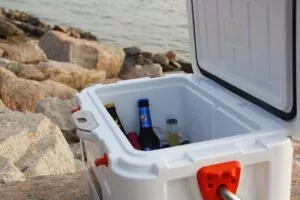
The Best Coolers In Canada
Looking to keep your drinks cold all summer? This cool guide will help you pick the best cooler.

The Best Hand Cream in Canada
You’re not doomed to suffer from winter dry skin and cracked hands. Here are the top-rated hand creams in Canada.

The Best Games To Play When You Need To Chill
Our favourite games for you to chill after a busy day.

The Best iPhones
New year, new iPhone on the market. Here’s a full guide for those of us who don’t even know where to start with iPhones.

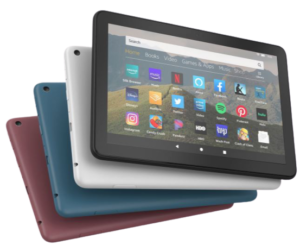
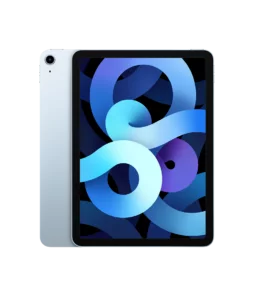
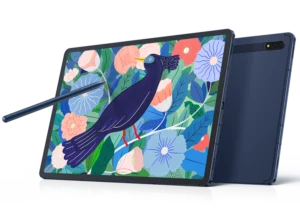
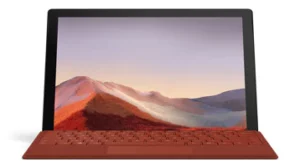

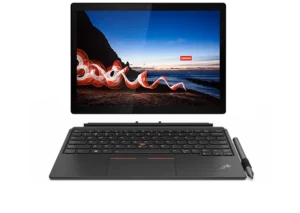
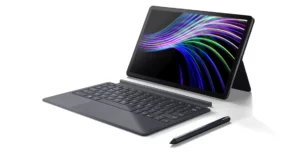
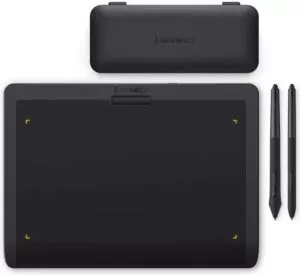
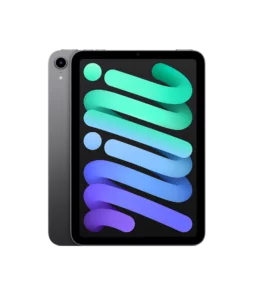
top rated pill for itching top rated pill for itching strongest over the counter allergy
https://yo88.com/ cung cấp tỷ lệ cược hàng đầu, giúp nâng tầm các nỗ lực cá cược của bạn lên một tầm cao mới.
There’s definately a lot to know about this issue.
I like all of the points you have made.
Привет, всем участникам сообщества! Недавно применил услугами машины http://duster-clubs.ru/forum/album.php?albumid=1246&pictureid=10399&commentid=7385
для перемещения из аэропорта. В целом ощущение — хорошее. Шофёр приехал в срок, автомобиль была опрятная, а сам персонал — учтивый. Однако хотелось бы узнать, есть ли у кого-то проверенные компании, которые предлагают лучшие цены. Также интересует, как вы обычно заказываете такси — через программы, по номеру или же выбираете фиксированный стоимость? Буду рад подсказкам и замечаниям. Благодарю!
The AI art revolution is happening now. Visit [url=http://marshfieldlandcompany.com/__media__/js/netsoltrademark.php?d=sarov.prof-elecktric.ru%2Freview%2Fgaranty-and-service%2Fpolozhitelnyy-otzyv-o-sotrudnichestve-s-marketpleysom-websender%2F]here[/url] and see how technology is changing the way we create and experience art.
25 de Outubro de 2024 Desconto no ingresso a partir de 50%, online e 30% na bilheteria,em setores específicos. Seja você um iniciante ou um craque experiente, o Jogos 360 traz os melhores jogos de futebol online grátis. Marque um golaço agora mesmo e descubra por que nossos jogos são os favoritos dos amantes de futebol! Entre no campo com lendas como Messi, Cristiano Ronaldo, Maradona e outros grandes nomes do esporte. Experimente jogos clássicos e divertidos como Soccer Bros, com os famosos cabeçudos, ou desafie um amigo no modo para 2 jogadores em Soccer Random. Cada presidente de Federação ganhava 50 mil por mês. Quando assumiu, Ednaldo turbinou os contracheques da cartolagem. Hoje, um presidente de federação ganha 215 mil reais, por mês, com direito a décimo sexto salário.
http://odiginap1988.bearsfanteamshop.com/artigo-completo
Neste artigo, abordaremos as regras do jogo, como apostar passo a passo e as melhores estratégias do jogo Spaceman na Bet365. Acompanhe! Viktigt meddelande As melhores dicas para jogar Spaceman são: utilizar as rodadas grátis presentes nos bônus de cassino online, como a Superbet, e experimentar a versão demo do jogo do astronauta para compreender como funciona o crash. O jogo de apostas Spaceman funciona de forma similar a outros crash games do mercado. Nele, há um multiplicador progressivo que aumenta de acordo com o tempo de voo do astronauta e o jogador deve tentar prever qual é o melhor momento para encerrar a aposta antes que o astronauta pare de voar. Aviso importante O Spaceman é um dos jogos de cassino mais divertidos do momento, e a Bet365 é a plataforma perfeita para você apostar nesse jogo. Se você duvida, acompanhe este conteúdo e descubra as vantagens e como funciona o Spaceman na Bet365.
Hi, Neat post. There’s an issue with your website in internet explorer,
could test this? IE still is the marketplace
chief and a huge portion of other people will pass over your excellent writing due to
this problem.
So, reader, I just found something shockingly creative, I had to drop my sandwich and broadcast this.
This creation is a design explosion. It’s packed with smooth UX, brain-hugging ideas, and just the right amount of designer madness.
Sound too good? Alright, [url=http://marionmainstreetllc.com/__media__/js/netsoltrademark.php?d=biysk.turholmi.ru%2Freview%2Fobzory%2Fblagodarnost-za-sotrudnichestvo-s-build2last-ru-v-biyske%2F]see for yourself right here[/url]!
Still scrolling? Fine. Imagine a robot designer built a site after arguing with ChatGPT. That’s the frequency this beauty gives.
So hit it, and send it to your friends. Because on my Wi-Fi, this is worth it.
You’re welcome.
Hey there, creative soul, I just found something shockingly creative, I had to stop everything and share immediately.
This thing is a design explosion. It’s packed with smooth UX, next-level thinking, and just the right amount of interface wizardry.
Sound too good? Alright, [url=http://thomasmunz.ru/bitrix/redirect.php?goto=https://snargl.com/blog/exploring-microtextures-the-fascinating-world-of-amazing-surfaces/]go look right this moment[/url]!
Still scrolling? Fine. Imagine a freelancer on 3 espressos built a site after binging inspiration. That’s the frequency this content gives.
So go ahead, and share the love. Because no lie, this is pure genius.
Boom.